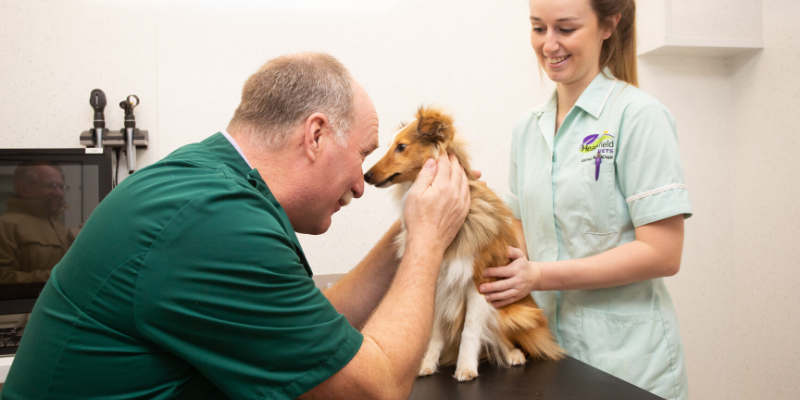What is ‘sound aversion’ in cats and dogs?
‘Sound aversion’ or a fear of loud noises is quite a common problem in the pet world. It can be caused by a lack of exposure to loud sounds in early development, a genetic pre-disposition or even as an emotional response to a traumatic event. The symptoms of sound aversion can include pacing, panting, destructive behaviour, toilet accidents and attempting to hide or escape.
Fireworks and thunder are are obvious culprits for causing anxiety and distress in cats and dogs. There are steps you can take to lessen exposure to these sounds, such as closing curtains, turning the TV up and generally distracting pets from the noise outside. This is one scenario where starting a noise desensitisation programme is a good idea – thunder can be a problem at any time, but fireworks tend to be concentrated between November and December so the sooner you start, the sooner your pet will find these noises less frightening.
Everyday noises such as traffic sounds, doors slamming or a hairdryer whooshing away can also be a problem for some pets. In these cases ‘noise desensitisation’ is also a useful training tool for anxious behaviour. This involves playing the sounds your pet is likely to react to in order to reduce the anxious behaviour. You can book a noise desensitisation clinic with us, and we can recommend the tools and techniques to use with your pet to help them cope better with their noise aversion!
What can you do to help a cat or dog with sound aversion?
Sound aversion can cause major distress for some pets. Fireworks, thunderstorms and even everyday sounds like noisy traffic can cause anxious behaviour. Here are a few tips to help your dog or cat learn to live with life’s scary noises!
1. Use a noise desensitisation CD. These are looping sounds of things like fireworks, noisy roadworks, babies crying and doors slamming. When used correctly these can help to get your pet used to various noises and reduce anxiety. Please discuss using these CDs with your vet or a certified animal behaviourist for advice and support. Remember, it can take quite some time to have an effect but you would be giving your pet the gift of a lifetime of living fear-free!
2. Act natural and don’t comfort your pet. As hard as it may be, comforting an anxious dog only re-enforces their belief that there is something to be afraid of! Instead, try distracting them with a new toy or special treat. Continue to do things as you normally would around the house, so they can see from your behaviour that everything is fine.
3. Create a safe space in a quiet room where your pet can hide. Don’t try to coax them out as this will only add to their anxiety. They are allowed to hide away – just go about your business as usual!
4. Try a pet-safe herbal or pheromone diffuser like Pet Remedy, Adaptil or Feliway. These help reduce stress and anxiety naturally.
5. Keep your cool. Toilet accidents and destructive behaviour are common symptoms of distress – don’t punish your pet for displaying these behaviours, simply ignore them and once your pet is distracted, tidy up.
6. Try a ‘thundershirt’, these are tight fitted shirts made for dogs and cats that apply gentle constant pressure (similar to swaddling an infant) and can help reduce anxiety.
7. Consult your vet to discuss options for medical treatment if you are unable to control the anxious behaviour by the steps described above.
How to use noise desensitisation CDs and online videos
Noise desensitisation CDs are looped sounds of what your pet considers to be scary noises! They include sounds such as fireworks, thunderstorms, hoovers and traffic. Using these sounds can help get your pet (especially kittens and puppies) get used to everyday noise and reduce their anxiety moving forward. Here’s a few tips for using your CDs:
1. Start training early! Begin 6 months before Bonfire Night for fireworks and begin gently with puppies.
2. Start slow! Settle your pet with a toy or long lasting treat and start the CD at the lowest volume. Slowly increase the volume and watch for a reaction (like an ear twitch) from your pet. When your pet reacts, take the volume back to when your pet didn’t react. This is your starting volume, make a note of it.
2. Always settle your pet before beginning the CD. Start at the ‘starting volume’ and gradually increase the duration you play it for. You can then increase the volume as you pet becomes more accustomed to the sound and eventually work your way to playing a full track at a realistic volume.
3. If your pet reacts, turn off the CD and give them no interaction. Comforting a scared dog only re-enforces their fear. Wait for your pet to calm down before starting the process again.
4. Reward calm behaviour. And never react to the noises yourself.
5. Vary when and where you play the CD (try the car or garden) and who’s around when you’re training.
6. Try complementing your training with a calming diffuser like Pet Remedy or Adaptil, which can reduce anxiety.
Call us on 01435 864422 if you’d like more information and advice about controlling anxious behaviours.


